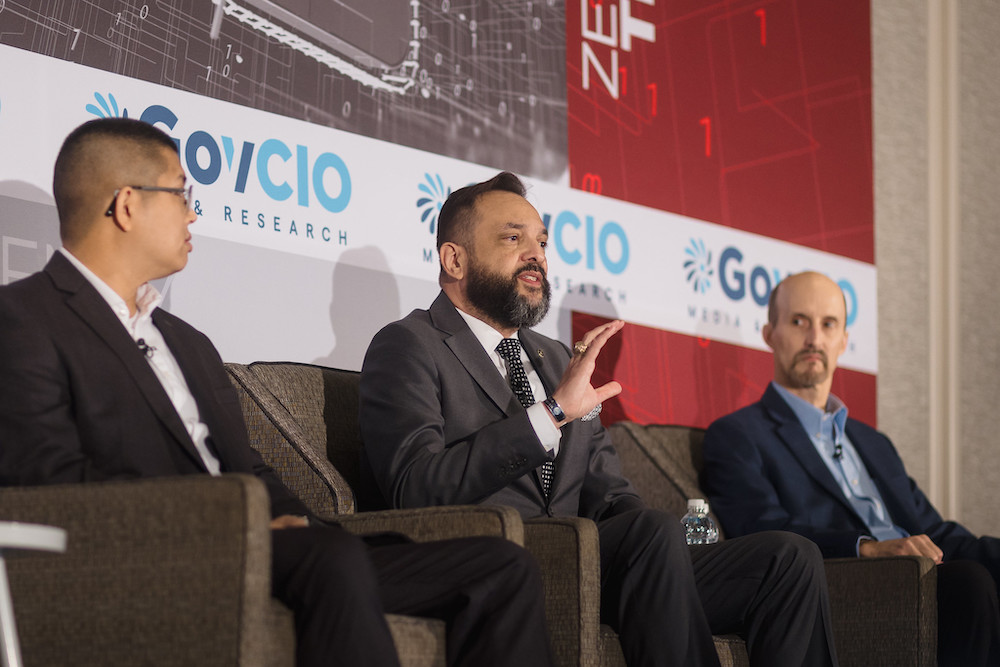VA Streamlines Product Approach to Improve Innovation
Moving from traditional silos to streamlined operations has boosted agility and scale, and now the agency is eyeing more future-focused development.

Amid the Department of Veterans Affairs’ move to a product-oriented model for software development, the agency is continuously streamlining its processes in order to free up more of its budget toward technology innovation. For an agency of its size, doing so has not been easy.
“Transformation is a bit of a challenge for us. Figuring out how to move an organization as large as us is like steering a ship. It takes a while for that shift to start moving. I like to think we’ve hit a tipping point. Once that ship starts to turn, it’s hard to stop it. We’re starting to get some of that energy,” said Daniel McCune, acting associate deputy assistant secretary of VA’s Enterprise Program Management Office, during an FCW event this week.
Much of this has spurred a persistent focus on enhancing veterans’ customer experience. Traditionally, VA has operated its technical foundation in silos, which resulted in what McCune referred to as software fragility and difficulties with customer experience.
“We’ve distilled the architectural design and patterns that we use — all those detailed discussions with a customer — we’ve lost that when we passed it from the development team to the operations team, and the result of that is what I called software fragility because we’re making changes on a product that is not informed by the original design principles,” McCune said. “That’s not an ideal situation.”
Because of this, veterans had to navigate through different units to receive benefits, and VA experienced scheduling delays and integration challenges. To overcome these obstacles, VA unified teams to speed up product delivery and enhance customer experience.
“We wanted long-standing teams that own the product from cradle to grave. We needed a single point of accountability, and we wanted resources optimized for effectiveness as opposed to efficiency. So, we did that,” McCune said.
This shift led to VA’s shift from project or product teams that were accountable for the product throughout its entire lifecycle. VA also grouped products into lines with one manager so customers would not have to navigate between different teams. The department also created cross-functional, autonomous teams to have full access to resources.
“The other component of this is growth. We are growing our software inventory 16% a year … What that means is a bigger and bigger component of our budget is required to keep these systems up and running, and less is available for innovation,” McCune said.
VA streamlined its software development life cycle (SDLC) processes, developed faster ways to deploy new solutions and freed up funding for innovation to support the increased IT demands. These three areas served as pillars of VA’s transformation.
VA also formally adopted the Scaled Agile Framework (SAFe) to increase value and free teams up to focus on developing software rather than documentation. The framework also provided a “fail fast” system.
“Because we can’t modernize all our systems overnight, we’re going to have to modernize how we build and release them,” McCune said. “One of the key components for us was adding application performance monitoring. We needed stable products in production, we needed early warnings … and we needed to be able to quickly diagnose problems when we had them. Monitoring has been key to us doing that.”
VA has also adopted a “buy-before-build” model for new solutions to reduce technical debt and increase scale, and when the department does have to build, it’s using low-code/no-code development platforms. With these advancements, VA has reduced its average time to field a new solution from 584 days to approximately 90 days.
“We now spend only 20% of our resources on that non-value-added activities and 80% on business outcomes,” McCune said. “Essentially, we are moving from a ‘capital expenditures (CAPEX)’ to an ‘operating expenses (OPEX)’ model.”
This is a carousel with manually rotating slides. Use Next and Previous buttons to navigate or jump to a slide with the slide dots
-

How TMF is Helping Agencies Accelerate Tech Modernization
The program launched a new AI pilot to expedite TMF applications as agency leaders urge more to consider applying for funds.
4m read -

Transitioning Systems for Modern Agency Missions
IT modernization is a constant process necessary for improving customer service, mission delivery and collaboration.
40m watch -

Defense Planning Commission Recommends Common Analytics System
The group's report says that data modernization is critical to streamlining and providing agility to budgeting process.
3m read -

'Balance' Needed in Hybrid Cloud Security, Interoperability
Federal officials from CISA and SOCOM say hybrid cloud cybersecurity needs a holistic approach to be successful.
4m read




